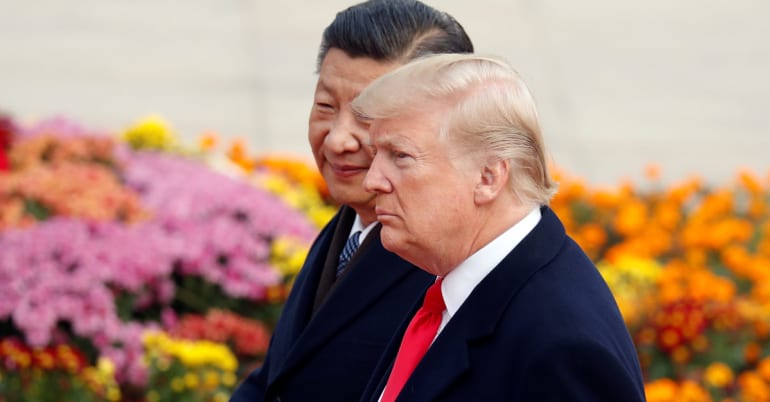


This week, Simply put continues a two-part series on the topic of tariffs. Last week, we found that the notion that ‘tariffs = inflation’ was not conclusively supported by 125 years of data. This week, we extend the discussion by revisiting the principal argument of the Trump administration, which asserts that a trade war is unlikely to result in increased inflation because 2018’s tariffs did not. However, this assumption is not entirely accurate, as there were underlying reasons for the apparent lack of inflationary growth at that time.
Read also: Tariffs, growth and inflation: what can 125 years of economic history tell us?
2018 was a year that left an indelible impression on the memory of many investors. February saw implied volatility surge – Volmageddon – on the back of a modest equity decline and inflation concerns (which were unrelated to the trade war). The trade war emerged later in the year and contributed to one of the worst December performances for equities in 40 years. Our focus here is on the trade war and its limited impact on inflation. Figure 1 clearly illustrates this by comparing the realised year-over-year core and headline inflation in the US between 2017 and 2018 against market expectations.
FIG 1. Various US inflation measures, 2017-20181

The key points from this chart are:
Despite higher import taxes, the overall impact on inflation – both realised and expected – was negligible. Why did the trade war not translate into higher inflation? This paradox remains a critical point of analysis.
The resolution to the inflation conundrum primarily hinges on the specifics of how the tariffs were applied. Figure 2 illustrates the changes in tariffs during the periods 2014-2017 and 2018-2021 from two distinct viewpoints. It contrasts the average weights (right) across both periods with the trade-weighted averages (left). This indicates that while average tariffs may increase due to substantial tariffs being imposed on specific items, these items may not significantly impact the overall import data. For example, the highest tariff on imported consumer goods escalated from 350% in the first period to 1410% in the second, marking a substantial increase.2 However, these severe tariff applications had a minimal effect on the global aggregated data.
FIG 2. Average US import tariffs over the 2014-2017 and 2018-2021 period3

Two crucial insights emerge from these charts:
That 2018 did not witness significant inflation induced by tariffs can be attributed to tariffs barely shifting the overall tariff landscape. In summary, the notion that ‘tariffs = inflation’ is simplistic and misleading, requiring a nuanced understanding of the associated complexities.
Read more: Will US market concentration fade in 2025?
Our Balanced All Roads solution currently has a 158% market exposure, with its exposure to hedges and cyclical risk premia being well-balanced from a historical perspective4. We currently retain a 24% exposure to inflation hedges, a 54% exposure to duration and a 16% exposure to volatility strategies, with all three resulting in a 70% exposure to equities and credit. Uncertainty surrounding the current situation calls for such balanced exposures across risk premia and hedges to be maintained.
Simply put, for tariffs to generate inflation, they need to be directed at large import categories – this is not what occurred in 2018.
The most recent evolution of our proprietary nowcasting indicators for global growth, global inflation surprises and global monetary policy surprises is designed to track the recent progression of macroeconomic factors driving the markets.
Our nowcasting indicators currently show:
World growth nowcaster: long-term (left) and recent evolution (right

World inflation nowcaster: long-term (left) and recent evolution (right)

World monetary policy nowcaster: long-term (left) and recent evolution (right)

Reading note: BWB’s nowcasting indicator gathers economic indicators in a point-in-time manner in order to measure the likelihood of a given macro risk – growth, inflation surprises and monetary policy surprises. The nowcaster varies between 0% (low growth, low inflation surprises and dovish monetary policy) and 100% (high growth, high inflation surprises and hawkish monetary policy).
important information.
For professional investors use only
This document is a Corporate Communication for Professional Investors only and is not a marketing communication related to a fund, an investment product or investment services in your country. This document is not intended to provide investment, tax, accounting, professional or legal advice.
Read more.